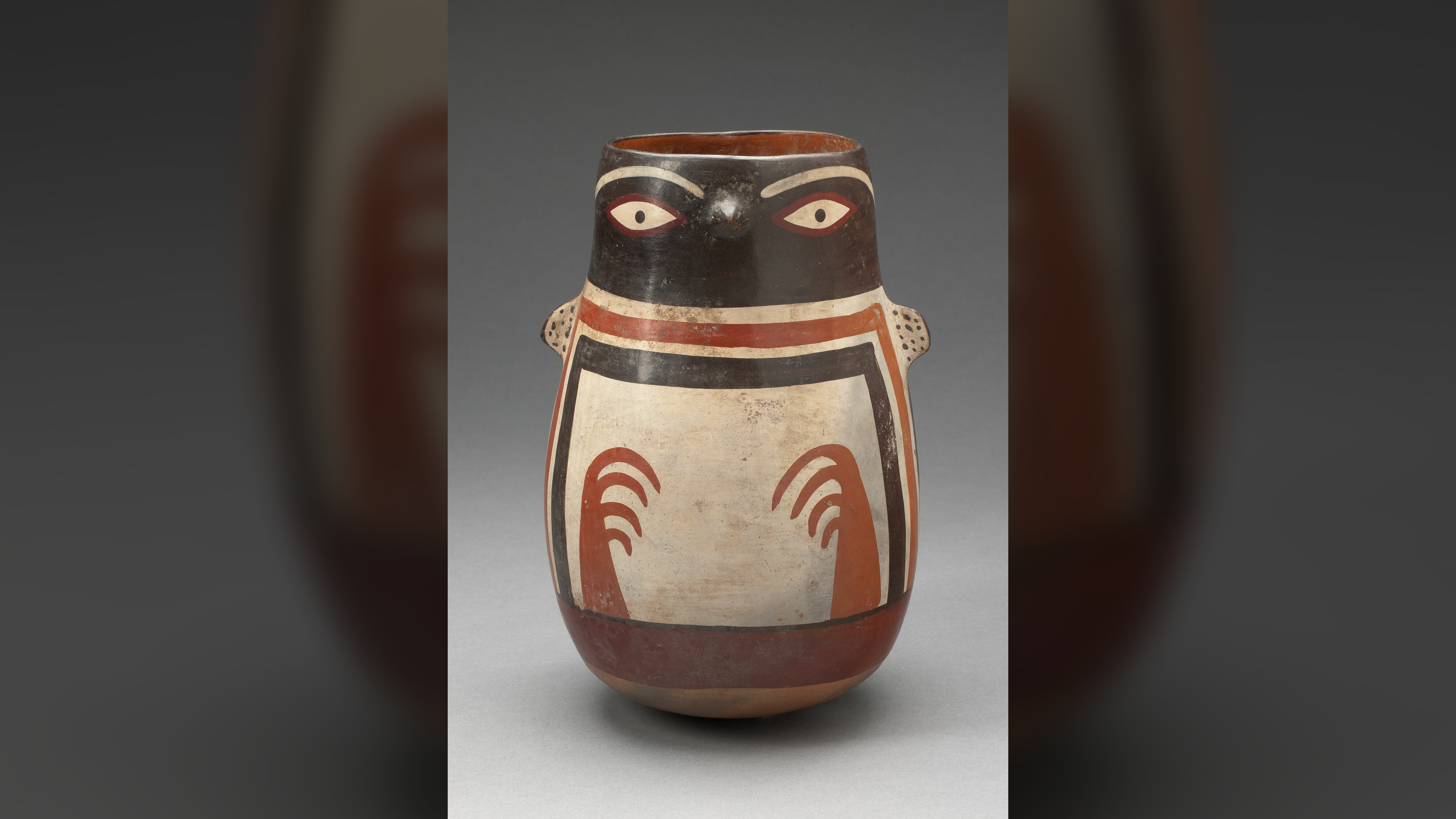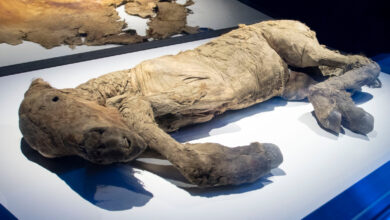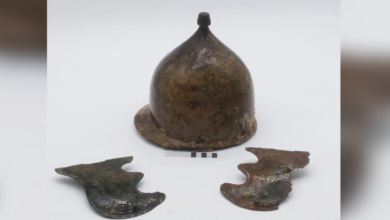Penguin Vessel: A 1,600-year-old pot shaped like an animal known for projectile pooping


Name: Penguin Vessel
What it is: A painted ceramic vessel
Where it is from: Southwestern coast of Peru
When it was made: Between A.D. 350 and 500
Related: Monomachos Crown: The 1,000-year-old crown honoring ‘the one who fights alone’ found by a farmer in a field
What it tells us about the past:
The Nazca people lived in a tropical desert on the southwestern coast of Peru between 100 B.C. and A.D. 800. So how did they know what a penguin looked like, and why did they honor one with its own ceramic pot?
This painted penguin pot is in the collection of the Art Institute of Chicago. It was made about 1,600 years ago and was collected in Peru in the late 19th century. The multicolored ceramic vessel is 8.2 inches (20.8 centimeters) tall and has tiny, sculpted wings and a prominent bill.
The Nazca (also spelled Nasca) people are best known for their enormous geoglyphs — designs that are carved into the ground but are most easily seen from above. Hundreds of Nazca Lines have been discovered. They often depict images from the natural world, such as a cat, a monkey, a pelican and a killer whale. Experts don’t know why the Nazca created these geoglyphs, as the culture left no written records.
But Nazca pottery also featured animals, people, mythical creatures and gods in unique, multicolored styles reminiscent of the geoglyphs, pointing to the importance of these creatures to their society.
MORE ASTONISHING ARTIFACTS
According to the Art Institute of Chicago, this vessel is a rare depiction of the Humboldt penguin (Spheniscus humboldti), a species that lives along the Pacific Coast and is known for projectile pooping. The penguins can live along the Peruvian coast thanks to the Humboldt Current, which brings frigid water from Antarctica northward, chilling the tropical water. Humboldt penguins have thrived in Peru for centuries, but they are now vulnerable to extinction due to climate change and human encroachment.
The penguin vessel dates to a period when the Nazca were experimenting with realistic depictions of animals, including a lobster-shaped vessel and numerous examples of the “mythical killer whale.” Although the orca — which features in ceramics, geoglyphs and petroglyphs — was clearly an important symbol to the Nazca, experts are unsure whether the penguin vessel held any special meaning or whether it reflects the Nazca’s keen observation of the natural world around them.
Source link




